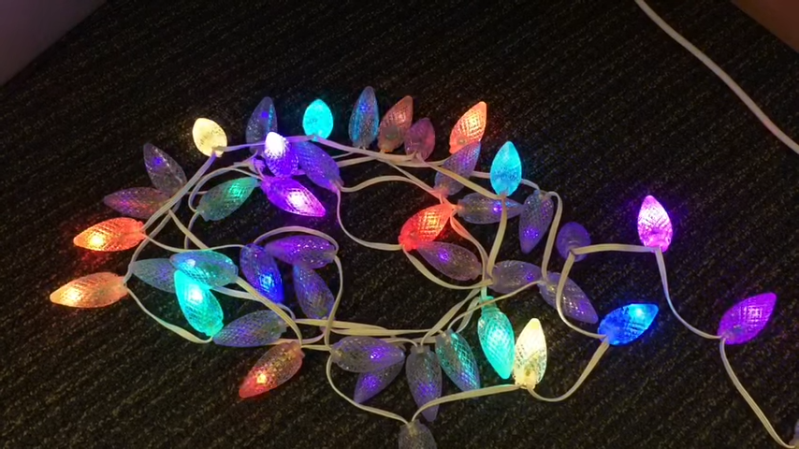Old-school filament-based Christmas lights used to be available in twinkling form. LEDs, with their hard-on and hard-off nature, aren’t naturally predisposed to such behavior. To rectify this, some time ago, [Mark Kriegsman] built an Arduino program that makes LEDs twinkle beautifully.
 The program is known as TwinkleFOX, and relies on the popular FastLED library for addressable LEDs. [Mark’s] demo setup is built around using WS2811 LEDs, put together in a string with plastic diffusers on each bulb. The Arduino is programmed to vary the brightness of each LED according to a triangle wave function. To create the twinkling effect, each LED has its own unique clock signal, so they vary in brightness at different times and at different rates.
The program is known as TwinkleFOX, and relies on the popular FastLED library for addressable LEDs. [Mark’s] demo setup is built around using WS2811 LEDs, put together in a string with plastic diffusers on each bulb. The Arduino is programmed to vary the brightness of each LED according to a triangle wave function. To create the twinkling effect, each LED has its own unique clock signal, so they vary in brightness at different times and at different rates.
Using an Arduino Uno or Leonardo, [Mark] reports its possible to twinkle 300 individual LEDs at a rate of over 50 updates a second. Using a faster microcontroller should net reliable performance with longer strings. Meanwhile, if you’re wondering how the older-style lights used to twinkle, we’ve covered that before too. Video after the break.















World’s about to end.
“overhead, without any fuss, the stars were going out.”
I think I would have preferred it written like, “……hard off-and-on nature.”
“each LED has its own unique clock signal”
NO, just NO.
Monkey author copies BS !
The WS2811 doesn’t use a clock signal but an APA102 does. Neither generate a clock signal, which is how I read unique in that phrase, I’d think.
Hmm, seems overly complicated when you can buy cheap blinking LED’s and they won’t keep perfect timing. Nobody has seen BigClive’s “supercomputers” I assume.
These things, to be more specific:
https://www.youtube.com/watch?v=7f8jgvvJe-Q
I copied his design with SMDs. Got the resistance on the resistors wrong and woo boy, is it ever bright. Need to make another with more aggressive resistors.
Interesting … More fractals in nature.
This is a fantastic example of exactly the kind of behavior this project was built to avoid. Incandescent mini lights don’t really blink in a binary on and off: there’s a subtle fading in and out as the filament warms up and cools down. This project exaggerates it, but I’m sure you can tune it to mimic incandescent lights pretty closely.
Wire a whole bunch of these, solve the problem at a fraction of the cost and time:
http://www.dansdata.com/gz065.htm
Although the TwinkleFox demo is from 2015, this article prompted me to port it to c# and target the Twinkly networked lights. It blasts udp packets as fast as possible reaching 450 fps in release mode.
https://github.com/MarkAlanJones/TwinklyWPF